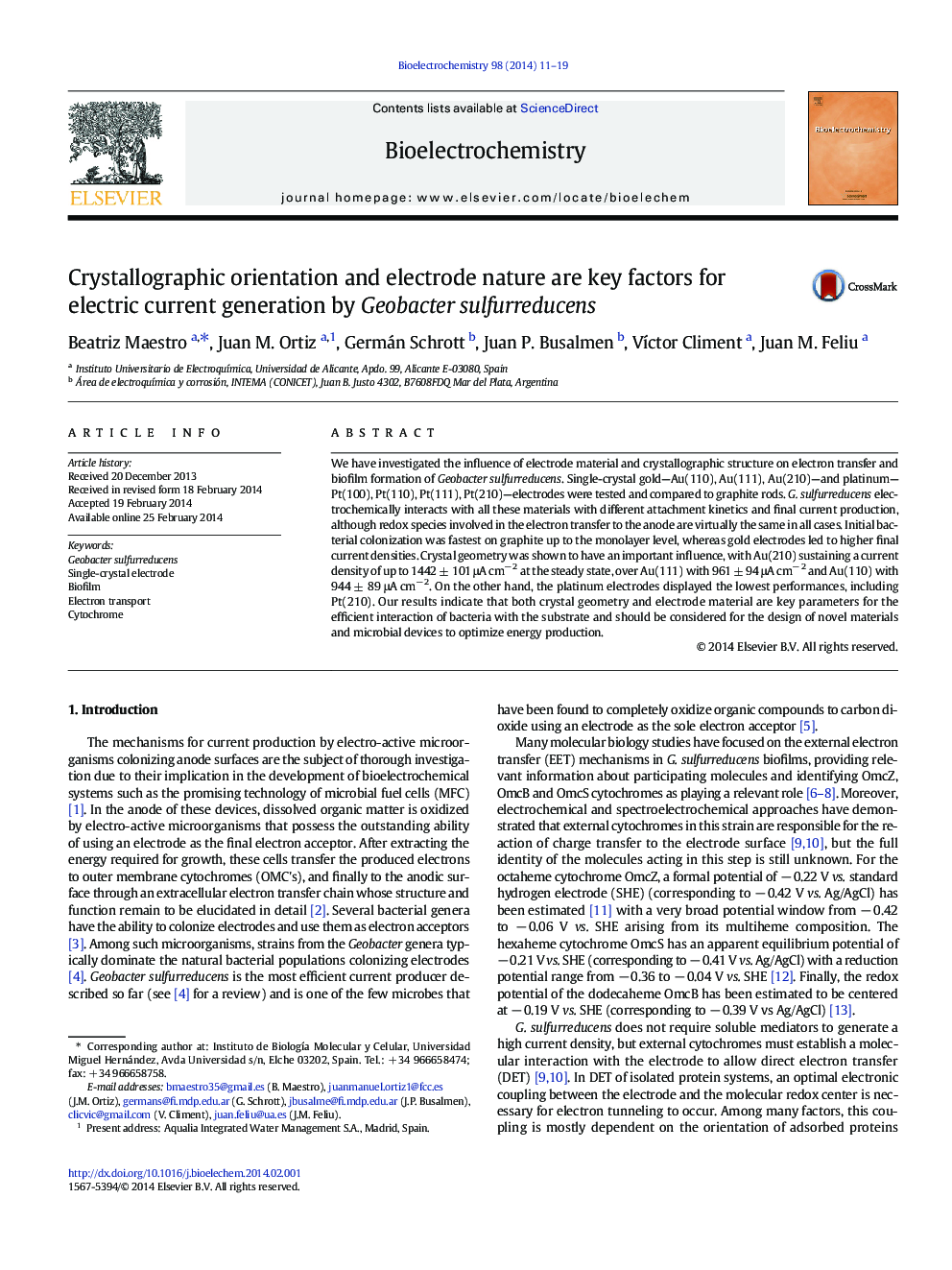| Article ID | Journal | Published Year | Pages | File Type |
|---|---|---|---|---|
| 1271017 | Bioelectrochemistry | 2014 | 9 Pages |
•Electrode crystallographic orientation and nature affect Geobacter current generation.•Gold single-crystals are better substrates than platinum for current production.•The highest current density is attained with Au(210) electrodes (1442 ± 101 μA cm− 2).•The active molecules wiring the biofilm to the electrode are the same in all cases.
We have investigated the influence of electrode material and crystallographic structure on electron transfer and biofilm formation of Geobacter sulfurreducens. Single-crystal gold—Au(110), Au(111), Au(210)—and platinum—Pt(100), Pt(110), Pt(111), Pt(210)—electrodes were tested and compared to graphite rods. G. sulfurreducens electrochemically interacts with all these materials with different attachment kinetics and final current production, although redox species involved in the electron transfer to the anode are virtually the same in all cases. Initial bacterial colonization was fastest on graphite up to the monolayer level, whereas gold electrodes led to higher final current densities. Crystal geometry was shown to have an important influence, with Au(210) sustaining a current density of up to 1442 ± 101 μA cm− 2 at the steady state, over Au(111) with 961 ± 94 μA cm− 2 and Au(110) with 944 ± 89 μA cm− 2. On the other hand, the platinum electrodes displayed the lowest performances, including Pt(210). Our results indicate that both crystal geometry and electrode material are key parameters for the efficient interaction of bacteria with the substrate and should be considered for the design of novel materials and microbial devices to optimize energy production.
Graphical abstractFigure optionsDownload full-size imageDownload as PowerPoint slide
